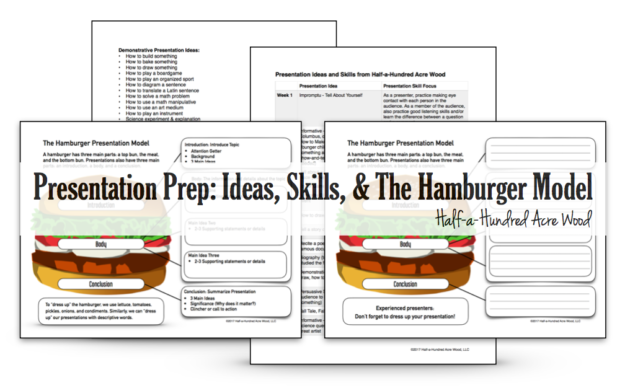
Imagine this. You’re headed out the door 10 minutes late when suddenly you realize that you forgot to have your 7-year-old prepare a presentation (again!), so he grabs the first thing that comes to mind as you walk out the door, which happens to be…
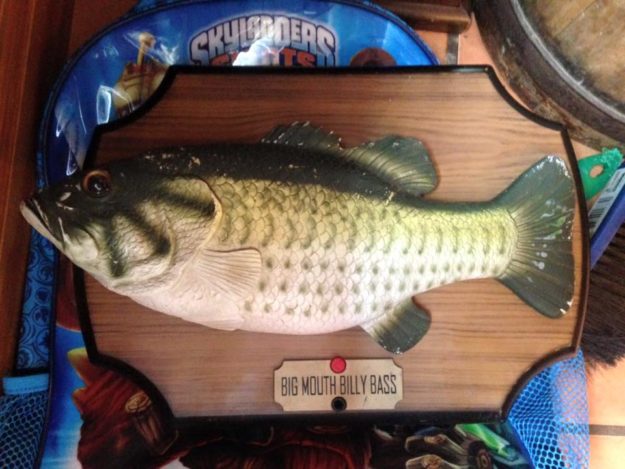
I’d like to say this event occurred on an off-week, but the truth is, over the years, our family has thoroughly practiced the art of impromptu presentations. Our children have grabbed many a last-minute-show-and-tell item, made up ridiculous stories on the fly, and provided enthralling presentations about “what’s in my pencil box.” Still, this is one of my favorite aspects about our co-op day, and we aim every year to do a little bit better than last.
I’ve had these thoughts stored away for some time now and wanted to pull them out of the woodwork, especially as we head into a new school year. These are simply a few tools we’ve used to prepare and practice presentations in our family (when we haven’t been grabbing last minute items due to lack of preparation, that is).
The Hamburger Presentation Model
We were introduced to the Hamburger Model during 4-H speech preparation, and we’ve used it since then as a guideline for presentations and for writing paragraphs or essays. It provides a simple structure for talking about pretty much anything.
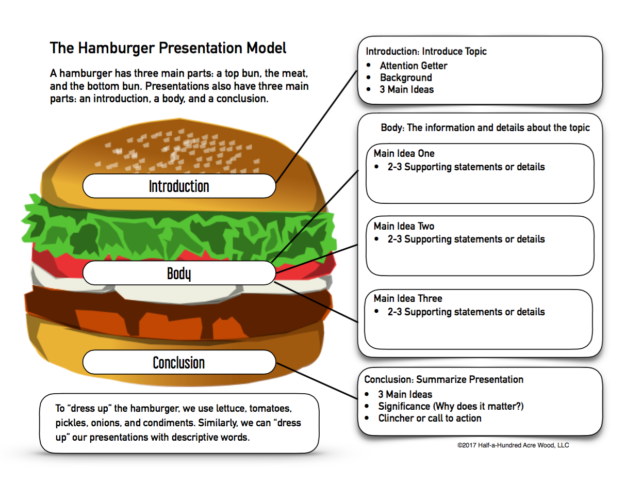
Just as a hamburger has three main parts, so does a speech, presentation, paragraph, or letter. These forms of communication can also be dressed-up with extras to make them more “flavorful.”
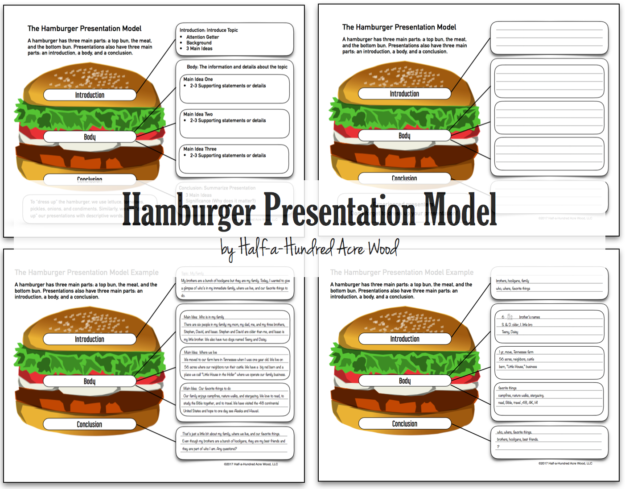
Included in this PDF is a written example, a Key-Word-Outline example, and a blank version in case you would like to use it as a tool to help your student(s) learn how to structure a presentation.
Presentations for young children
For our youngest children, presentations are primarily show-and-tell type presentations. However, even with non-readers, we have taught our children how to use key-word-outlines for their presentations by using pictures.
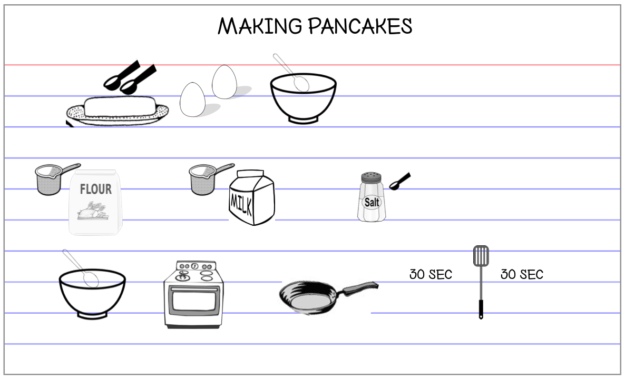
Normally these are hand-drawn by me, but this is a digital example of a presentation our third son did on “how to make pancakes” before he was able to read. Notice the hieroglyphic-style Key Word Outline. He would tell me what picture he wanted on the card to help him remember what he was supposed to say.
Presentation Ideas
Okay, so now that we have a structure for our presentation, what on earth should we present? The best thing about presentations within our co-op is that it is open-ended in that our community does not have a formal presentation schedule. Students present on whatever interests them (including Big Mouth Billy Bass). Still, sometimes it helps to have some ideas to pull out of a hat. It also helps to aim for a variety of presentations. Although there exist multiple presentation types, I’ve narrowed it down to four basic categories below. (This is not an exhaustive list of ideas but just something to help with brainstorming. There also exists overlap between presentation types. Visit this website for additional information regarding presentations.)
Informative Presentation Ideas:
- Show and tell
- Mystery bag (Place an object in a paper sack and describe what’s in it until the audience guesses what it is.)
- What’s in my pencil box
- Family history
- A family tradition
- A family vacation
- A hobby
- A favorite memory
- A book review
- A movie review
- A toy or game review
- Retell a story (Aesop, Shakespeare, Mother Goose)
- History topic
- Science topic
- Timeline topic
- Biography (President, leader, artist, composer, historical, scientific, inventor, ancestor, hymn/song writer)
Demonstrative Presentation Ideas:
- How to build something
- How to bake something
- How to draw something
- How to play a boardgame
- How to play an organized sport
- How to diagram a sentence
- How to translate a Latin sentence
- How to solve a math problem
- How to use a math manipulative
- How to use an art medium
- How to play an instrument
- Science experiment & explanation
- Handicraft
Entertaining Presentation Ideas:
- Retell a story (a personal story, Bible, Aesop, Shakespeare, Mother Goose, tall tale, legend, folklore, fable)
- Recite a famous speech
- Recite a poem
- Recite or sing a song
- Tell a joke
- Use vivid, figurative language to describe a scene
- Share a riddle, puzzle, or mystery
- Act out or recite a scene from a play
Persuasive Presentation Ideas:
- Make an advertisement (a real product, a historical product, or one you made up)
- Convince audience to do something (improve your health by not eating junk food, read this book, watch this movie, become a volunteer and change the world, join 4-H)
- Encourage audience to think a certain way about something (origins, current events, politics)
- Book, movie, or toy/game review
Now that we have some ideas, let’s take a look at…
Presentation Skills to Practice
While there are some skills that can be honed in practicing presentations, the most important thing is to provide consistent opportunities and encouragement as a child becomes comfortable presenting in front of a group. Speaking publicly is the single greatest fear of many, many people. (The irony of this is that presentations are a normal part of everyday life. Every time we tell someone about something, we’re presenting it. Isn’t it bizarre that we fear something so common?) Usually young children enjoy show-and-tell, but as they get older and show-and-tell becomes a thing of the past, the fears mount. By consistently providing a safe environment to present each week, students will overcome the fear, even when they go through the more awkward stages of development.
Young children are not usually ready to have a long list of skills they’re supposed to practice when presenting, and they’re certainly not ready for critique. But as children mature, they can focus on a skill to practice each week. These skills include…
- Preparation & organization (The Hamburger Model)
- Eye contact
- Speak slowly, loudly, and clearly (pacing, volume, and articulation)
- Appropriate gestures and facial expression
- Use props effectively (not a distraction)
- Control fidgeting and habitual body movements
- Add descriptive details (5-sense words, dress-ups, decorations)
- Attention grabber
- Strong final clincher or call to action
- Enthusiasm
- Face audience (if using whiteboard)
- 3-second rule (pause 3 seconds)
- Inflection & vocal expression (alter pitch and volume to add suspense and excitement)
- Tempo/Pace (slow down speech and incorporate well-timed pauses)
- Poise (relax and smile; continue with presentation even if you make a mistake)
- Only speak when looking at audience. (Read card to self, look up at audience, and then speak.)
I’ve included a document below that has the ideas and skills listed above, along with a tentative schedule that we may use this year. But rather than follow a schedule, it may be better to allow students to literally pick a presentation idea and/or skill out of a hat (that is, unless they already have something they’d like to present).
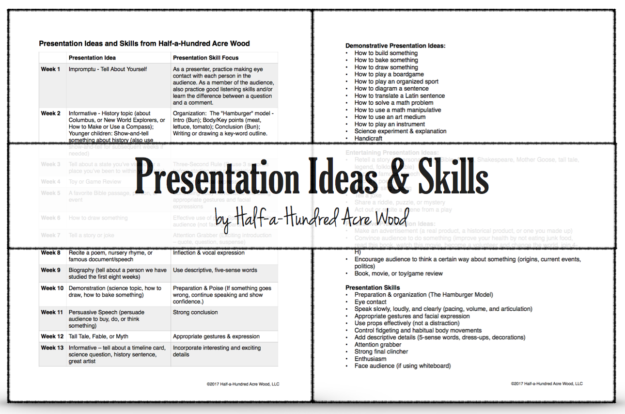
That’s my personal brain dump for presentations. I hope it’s helpful! If you have questions or if you’d like to offer any other suggestions regarding presentations, I’d love to hear from you in the comments!

